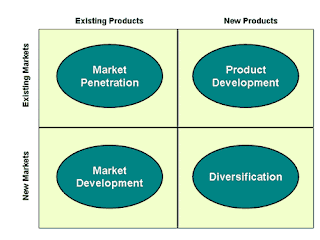MARKETING THEORIES –THE MARKETING MIX – FROM 4 P’S TO
7 P’S
Marketing is a continually evolving discipline
and as such can be one that companies find themselves left very much behind the
competition if they stand still for too long. One example of this evolution has
been the fundamental changes to the basic Marketing mix. Where once there were
4 P’s to explain the mix, nowadays it is more commonly accepted that a more
developed 7 P’s adds a much needed additional layer of depth to the Marketing
Mix with some theorists going even going further.
Before We move to 7 P we must first try to understand what is
original 4 P given by management Professional for marketing mix .
THE
MARKETING MIX
Simply Marketing Mix is a way used by
businesses , corporate , managers and Marketers to determine a proper product
or brands offering. The 4 P’s have been associated with the Marketing Mix since
their creation by E. Jerome McCarthy in 1960.
The Marketing Mix 4
P’s is illustrated as belows:

·
Product - The Product should
fit the task consumers want it for, it should work and it should be what the
consumers are expecting to get.
·
Place – The product should
be available from where your target consumer finds it easiest to shop. This may
be High Street, Mail Order or the more current option via e-commerce or an
online shop.
·
Price – The Product should
always be seen as representing good value for money. This does not necessarily
mean it should be the cheapest available; one of the main tenets of the
marketing concept is that customers are usually happy to pay a little more for
something that works really well for them.
·
Promotion – Advertising, PR,
Sales Promotion, Personal Selling and, in more recent times, Social Media are
all key communication tools for an organization. These tools should be used to
put across the organization’s message to the correct audiences in the
manner they would most like to hear, whether it be informative or appealing to
their emotions.
In the late 70’s it was widely discussed by Marketers/
Management Gurus that the Marketing Mix
with changing scenario and evolving technological environment , changing
customer preference and competition , it
requires more thing to be considered while making marketing and product
Strategy . This led to the creation of the Extended Marketing Mix in 1981 by
Booms & Bitner who had added 3 new elements to the 4 P’s Principle. This extended
Marketing Mix includes products that are
services and not only just physical things.
The extended 7 P’s
includes following three important element :
·
People – All companies are
reliant on the people who run them from front line Sales staff to the Managing
Director. Having the right people is essential because they are as much a part
of your business offering as the products/services you are offering.
Processes –The delivery of your service is usually done with the customer
present so how the service is delivered is once again part of what the consumer
is paying for.

·
Physical Evidence – Almost all services include some physical elements even if the
bulk of what the consumer is paying for is intangible. For example a hair salon
would provide their client with a completed hairdo and an insurance company
would give their customers some form of printed material. Even if the material
is not physically printed (in the case of PDF’s) they are still receiving a
“physical product” by this definition.
Though in place since the 1980’s the 7 P’s are
still widely taught due to their fundamental logic being sound in the marketing
environment and marketers abilities to adapt the Marketing Mix to include
changes in communications such as social media, updates in the places which you
can sell a product/service or customers expectations in a constantly changing
commercial environment.
Is there an 8th P?
In some spheres of thinking, there are 8 P’s
in the Marketing Mix. The final P is Productivity and Quality. This came from
the old Services Marketing Mix and is folded in to the Extended Marketing Mix
by some marketers so what does it mean?
The 8th P of the
Marketing Mix:
·
Productivity & Quality - This P asks “is what you’re offering your customer a good
deal?” This is less about you as a business improving your own productivity for
cost management, and more about how your company passes this onto its
customers.
Even after 31 years (or 54 in the case of the
original P’s) the Marketing Mix is still very much applicable to a marketer’s
day to day work. A good marketer will learn to adapt the theory to fit with not
only modern times but their individual business model.






